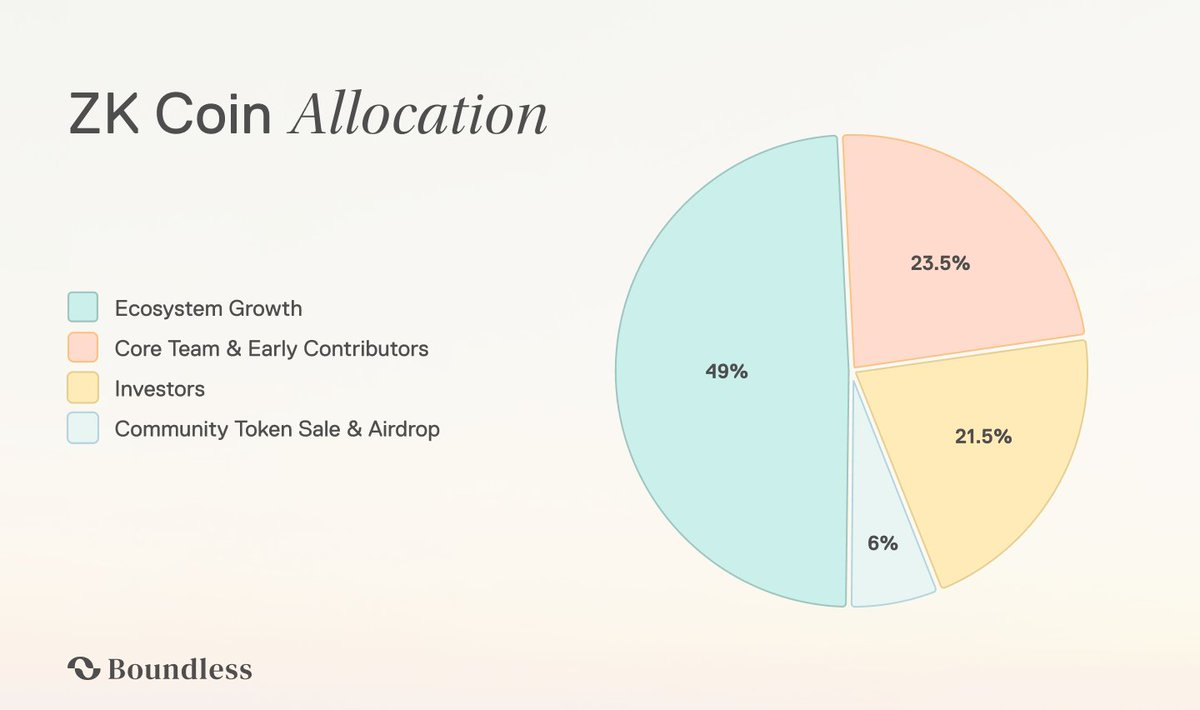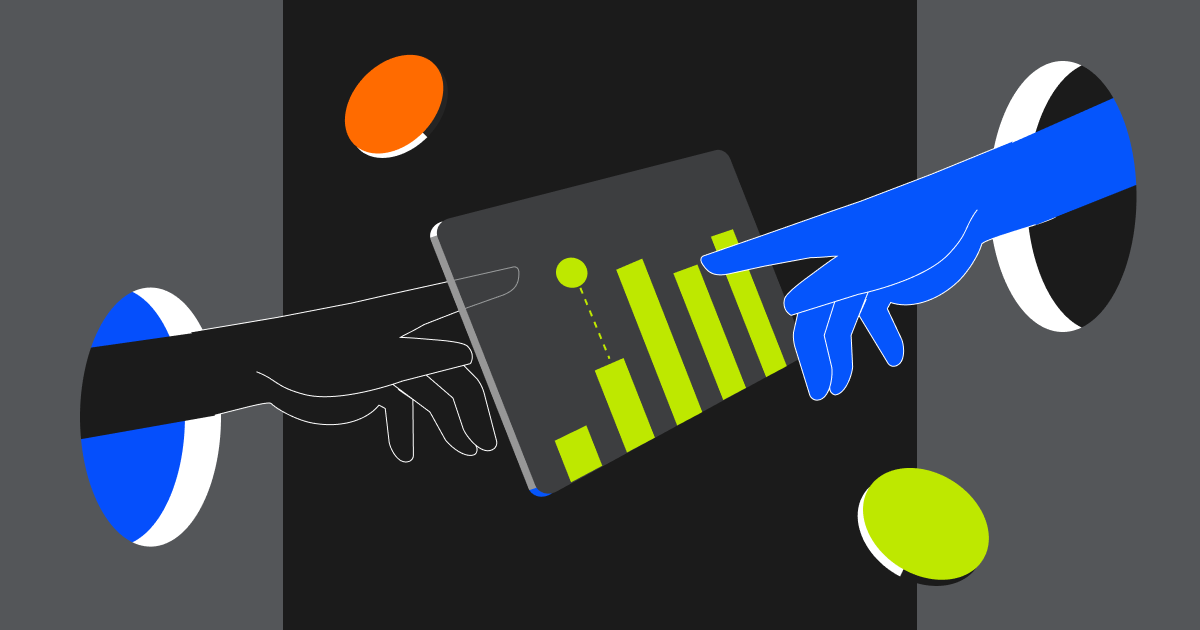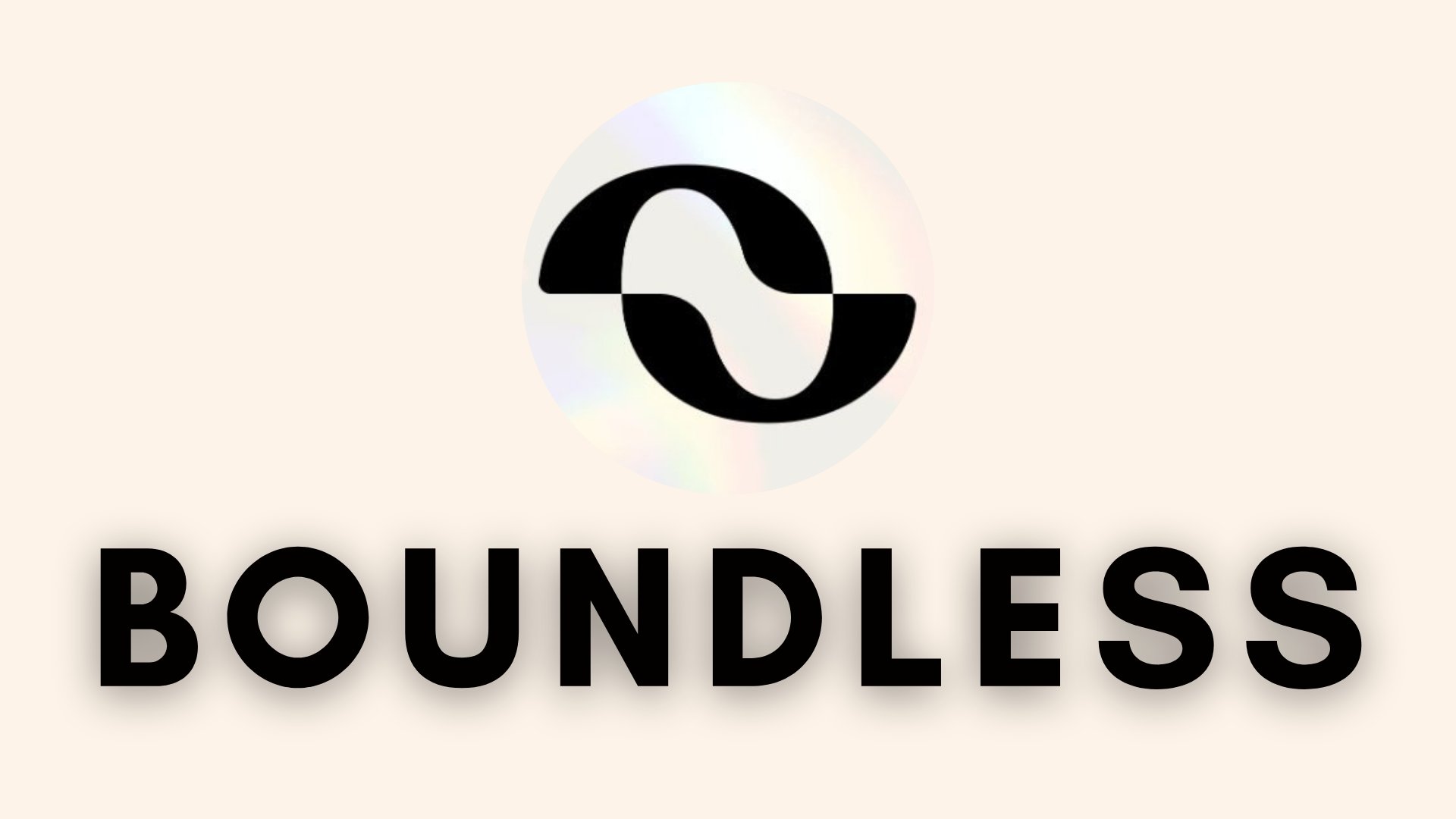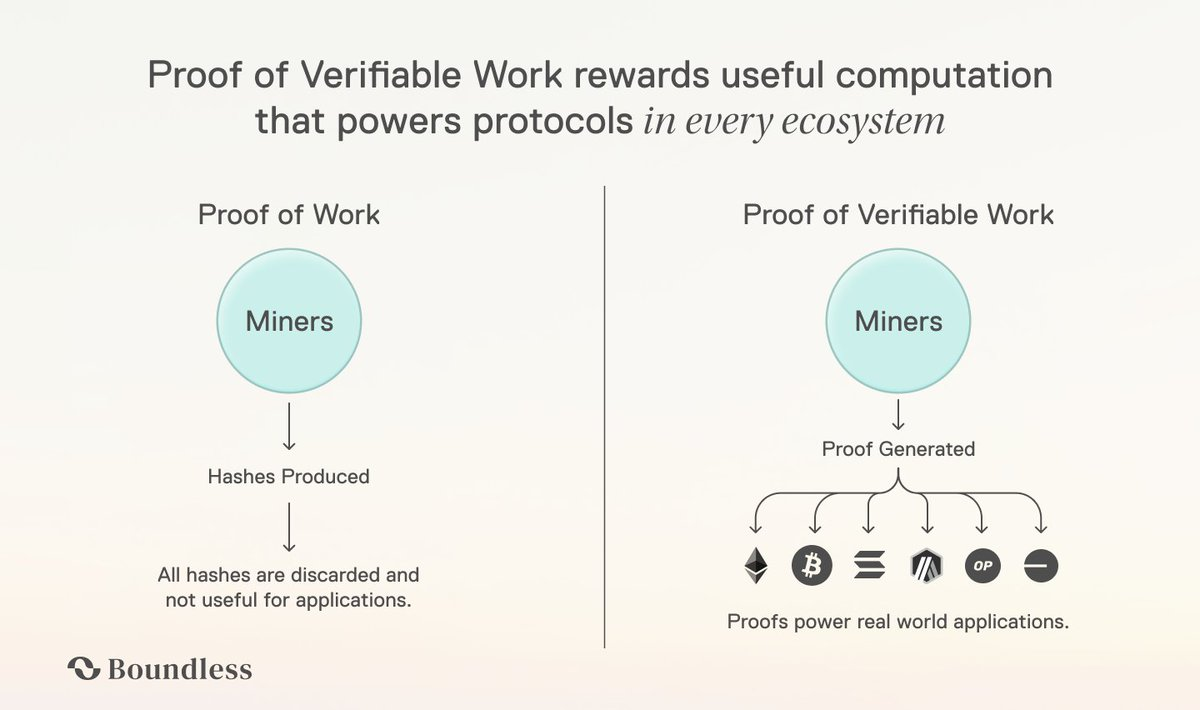The blockchain trilemma of achieving scalability, security, and decentralization has long been a challenge for the industry. While various solutions have been proposed,
zero-knowledge proofs
(ZKPs)have emerged as a promising technology to address scalability without compromising security. However, implementing ZKPs has been complex and resource-intensive for individual blockchains. Boundless (ZKC), developed by the RISC Zero team, introduces a universal protocol that provides verifiable compute services as a public good across multiple blockchains. Since its mainnet launch on September 15, 2025, and listings on major exchanges, ZKC has garnered significant attention for its innovative approach to internet-scale blockchain scalability. This article provides a comprehensive overview of ZKC, its technology, tokenomics, and potential impact on the blockchain ecosystem.
What Is Boundless (ZKC)?
Boundless (
ZKC
) is a
decentralized protocol designed to offer verifiable compute services through
zero-knowledge (ZK) technology across multiple
blockchains. It functions as a network of independent provers that offload intensive computational tasks from various chains,
rollups, and applications, aiming to provide a consistent scalability and interoperability layer for the blockchain ecosystem. The protocol was
incubated by RISC Zero, the team behind the first RISC-V zkVM, which enabled proof generation from standard programming languages.
The core vision of Boundless is to create an
"ecosystem of ecosystems"—a unified fabric where applications can compose transactions and read state across different blockchains like Ethereum, Bitcoin, and Solana without relying on traditional, trust-based bridges. By making various chains ZK-provable, Boundless aims to enable a new class of
cross-chain applications that are secure, scalable, and interoperable.
How Does Boundless (ZKC) Work?
Boundless operates by
decoupling execution from consensus, a design that addresses the scalability limitations inherent in traditional blockchain architectures. Instead of requiring every validator to re-execute each transaction—which leads to capped execution via gas limits and needless replication of compute across thousands of nodes—Boundless offloads computational work to a
permissionless network of "provers."
These provers generate compact,
cryptographically secure ZK proofs of computation, which are then efficiently verified on-chain. This model allows a blockchain's total computational capacity to increase as more provers join the network, effectively making blockchains
"internet-scale." The process involves several key steps:
-
Task Offloading: Blockchains, rollups, or applications submit computational tasks to the Boundless network.
-
Proof Generation: Provers compete to perform these tasks and generate ZK proofs using RISC Zero's zkVM.
-
Verification: The generated proofs are aggregated and submitted to the target chain, where they are verified with minimal computational effort.
-
Settlement: Once verified, the results are accepted, and the provers are rewarded through the Proof of Verifiable Work (PoVW) mechanism.
This approach not only enhances scalability but also maintains
security and decentralization by ensuring that the verification process remains trustless and efficient.
Use of RISC Zero’s zkVM
At the heart of Boundless' technology stack is
RISC Zero's zkVM, which stands for zero-knowledge virtual machines. This technology allows developers to write programs in
standard programming languages (like Rust and C++) and compile them into circuits that can generate zero-knowledge proofs. The zkVM enables the execution of arbitrary code while producing proofs that the computation was performed correctly, without revealing the underlying data.
The use of RISC Zero's zkVM provides several advantages:
-
Accessibility: Developers do not need to learn specialized languages or cryptography to implement ZKPs, lowering the barrier to entry.
-
Flexibility: The zkVM supports a wide range of computations, making it suitable for various use cases, from blockchain scaling to privacy-preserving applications.
-
Efficiency: By leveraging universal hardware (GPUs and ASICs), the zkVM allows for efficient proof generation, which is crucial for scaling to internet-level capacity.
Boundless builds upon this foundation by creating a
decentralized network of provers that utilize the zkVM to generate proofs for multiple blockchains, thus transforming the zkVM into a shared resource for the entire ecosystem.
Proof of Verifiable Work (PoVW) Mechanism
One of the most innovative aspects of Boundless is its
Proof of Verifiable Work (PoVW) mechanism, which serves as the network's economic model and incentive system. Unlike traditional
Proof-of-Work (PoW) systems that reward miners for solving arbitrary puzzles, PoVW rewards provers only for performing
useful computational work, specifically, generating ZK proofs that are verified and used by clients.
Key features of PoVW include:
-
Useful Work: Provers earn ZKC tokens only when they deliver valid proofs that are accepted by the network, ensuring that the computational effort contributes directly to blockchain scalability.
-
Staking and Security: Provers must
stake ZKC tokens as collateral to participate in the network. This staking mechanism ensures accountability; if a prover submits fraudulent proofs, their stake can be slashed.
-
Market-Driven Competition: The protocol creates a
competitive market for proof generation, where provers strive to be faster and more cost-effective, driving down costs and improving efficiency over time.
PoVW aligns incentives across the network: provers are rewarded for useful work, blockchains gain scalable computation, and users benefit from lower costs and higher throughput.
Community-Building Strategies
Boundless has implemented several
community-building strategies to foster network growth and decentralization. A key initiative was the
Collaborative Development Program (CDP) for early adopters in late 2024, which onboard developers and partners to the protocol. This was followed by the
Mainnet Beta in July 2025, which attracted over 411,000 participants and included an initiative called 'The Signal,' where the network began generating proofs for entire blockchains like Ethereum and Base in collaboration with over 20 partners.
Additionally, Boundless and its exchange partners have used
airdrop campaigns to incentivize participation. For example, Binance announced a
HODLer airdrop of 15 million ZKC (1.5% of the initial supply) for users who held BNB and other selected tokens. Such strategies not only reward early supporters but also encourage broader token distribution and network engagement.
As of September 2025, there were already over
2,700 provers actively generating proofs on the network, demonstrating rapid decentralization and community involvement.
Overview of ZKC Tokens
ZK Coin (ZKC) is the native token of the Boundless protocol. Each proof on the Boundless marketplace is secured by $ZKC; provers must lock $ZKC as collateral to prove an order, and requestors pay for proofs using the native token of the underlying blockchain (for example, ETH on Ethereum or SOL on Solana). As more protocols use Boundless, the amount of $ZKC locked as collateral increases. Through careful design and an emphasis on decentralization, Boundless aims to become the native ZK infrastructure for every ecosystem.
The initial circulating supply at launch was approximately 200.9 million ZKC (20.09% of the genesis supply).
Tokenomics and Distribution
Inflation Rate: The token has an
initial inflation rate of 7% in the first year, which gradually tapers to
3% by the eighth year. This inflation is used to reward provers through the PoVW mechanism.
Airdrops: As mentioned, 1.5% of the genesis supply (15 million ZKC) was allocated to airdrops, including Binance's HODLer airdrop.
Market Making: An additional 5 million ZKC was allocated for market activities at launch, with another 15 million ZKC reserved for future market activities after six months.
ZKC Token Allocation

The ZKC token allocation is as follows:
-
Ecosystem Fund: 31%
-
Core Team & Early Contributors: 23.5%
-
Investors: 21.5%
-
Strategic Growth Fund: 18%
-
Other: 6%
-
Public Sale: 1.38% (~13.79M ZKC)
Utility of ZKC
Staking: Provers must stake ZKC to participate in proof generation, which secures the network and ensures honesty.
Rewards: Provers earn ZKC rewards for generating valid proofs via PoVW.
Governance: ZKC holders can participate in governance votes on parameters like fee structures, emission rates, and network upgrades.
Payment: ZKC is used to pay for services within the Boundless ecosystem, such as requesting proofs.
The value accrual of ZKC is tied to the
demand for verifiable computation across blockchains; as more chains and applications use Boundless, the demand for ZKC for staking, payments, and rewards is expected to increase.
Price Prediction
Price predictions for ZKC vary widely based on source and methodology. It is essential to approach these forecasts with caution, as they are highly speculative and dependent on market conditions, adoption rates, and overall crypto market trends.
Short-Term (2025-2026): Some platforms estimate an average price of around
$0.93 to $0.97 in 2026, with a potential return of 0% to 5% from current levels. Others, however, present more optimistic forecasts, with averages around
$31.20 for 2026. These disparities highlight the volatility and uncertainty inherent in new tokens.
Long-Term (2030): Predictions range from an average of
$1.37 to
$54.82 by 2030. The more conservative model suggests a potential return of +49% from current prices, while the bullish model projects up to +75%.
Factors that could influence price include:
Adoption Rate: Widespread adoption by major blockchains and applications could drive demand.
Network Growth: An increase in the number of provers and proven computations could enhance token utility.
Market Sentiment: Overall crypto market conditions and investor sentiment towards layer-1 and ZK projects.
Investors should conduct their own research and consider the inherent risks before making any financial decisions.
Latest News
Boundless has made significant headlines in recent weeks, underscoring its rapid market entry and growing ecosystem:
-
Binance Listing: On September 13, 2025, Binance announced ZKC as its
39th HODLer airdropproject, distributing 15 million ZKC to eligible users. The token began trading on September 15 with USDT, USDC, BNB, FDUSD, and TRY pairs.
-
KuCoin Listing: KuCoin listed ZKC on September 15, offering
spot trading (ZKC/USDT) and a suite of trading tools, including futures with up to 50x leverage, margin trading, and savings products.
-
Upbit and Bithumb Listings: Shortly after, South Korea's largest exchanges,
Upbit and Bithumb, announced support for ZKC with KRW, BTC, and USDT trading pairs, expanding its access to a robust retail market.
-
Mainnet Launch: The official
mainnet launched on September 15, 2025, on the Base network, marking the debut of the PoVW mechanism and the token generation event (TGE).
These developments reflect strong exchange and institutional support, which is crucial for liquidity and accessibility in the early stages of a token's lifecycle.
Conclusion
Boundless (ZKC) represents a
innovative approach to blockchain scalability by leveraging a decentralized network of provers and zero-knowledge proofs. Its core technology, built on RISC Zero's zkVM, and its unique PoVW incentive model, position it as a potential key player in the quest for
internet-level blockchain scaling. The protocol's ability to provide verifiable computation as a cross-chain public good could unlock new possibilities for interoperability and application development across ecosystems.
However, like any emerging technology, Boundless faces challenges. The
inflationary token
modelrequires sustained network growth to offset potential selling pressure from prover rewards. Additionally, competition in the ZK space is fierce, with several established projects pursuing similar goals.
Despite these challenges, the strong community response, rapid prover adoption, and support from major exchanges and investors suggest a promising start. For the project to realize its long-term vision, it must continue to
onboard key ecosystem partners, drive demand for verifiable computation, and refine its economic model. If successful, Boundless could indeed become a fundamental piece of infrastructure for the next generation of scalable, interconnected blockchains.
References:
CoinCatch Team
Disclaimer:
Digital asset prices carry high market risk and price volatility. You should carefully consider your investment experience, financial situation, investment objectives, and risk tolerance. CoinCatch is not responsible for any losses that may occur. This article should not be considered financial advice.





